![]()
![]()
![]()
![]()
![]()
![]()
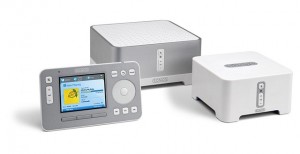 The Sonos Digital Music System is more than just a streamer. It consists of a server connected via twisted pair to your network and a controller with a color display. The server relays music to other Sonos devices via their own proprietary wireless network optimized for audio. All Sonos devices can play either their own playlists or play in sync. Everything controlled from the neat little handheld remote.
The Sonos Digital Music System is more than just a streamer. It consists of a server connected via twisted pair to your network and a controller with a color display. The server relays music to other Sonos devices via their own proprietary wireless network optimized for audio. All Sonos devices can play either their own playlists or play in sync. Everything controlled from the neat little handheld remote.
If you have more than one device only one of them needs to be physically connected to the network. The others receive their data wirelessly from there. There are three different types of devices to choose from: The ZoneBridge that does nothing except bridge the physical and wireless network – an access point, if you will, and two ZonePlayers that have actual playing capabilities. One of these ZonePlayers comes with a built in amplifier – the other without. In my book it is the latter that is most interesting. You simply connect it to your existing system – maybe even with a Benchmark Dac1 for conversion.
The entire system is controlled from up to 32 controllers or from a PC using some cool looking software – very nicely laid out.
 Esteemed Arcus has a potent player in the game of CD ripping audio servers. This one can copy CD onto its internal hard drive, back it up onto a network attached storage and play it back in a number of formats, including
Esteemed Arcus has a potent player in the game of CD ripping audio servers. This one can copy CD onto its internal hard drive, back it up onto a network attached storage and play it back in a number of formats, including 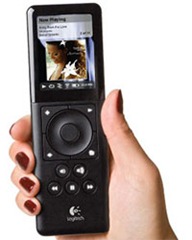 This is a clever device, in that it detaches navigation from the device completely and uses only the remote. The remote control has a small color LCD display which shows everything from playlists to album cover artwork. More Squeezeboxes can be linked together between rooms and either play different tracks or in-sync.
This is a clever device, in that it detaches navigation from the device completely and uses only the remote. The remote control has a small color LCD display which shows everything from playlists to album cover artwork. More Squeezeboxes can be linked together between rooms and either play different tracks or in-sync.
 The Slim Devices Transporter followed in the footsteps of the insanely popular Squeezebox that came to appear as pack leader when the first media streamers began popping up. Despite its resemblance with a mid-eighties teenage lamps-are-cool amplifier, it sports some pretty amazing specs, including balanced XLR output and an Asahi-Kasei AK4396 DAC.
The Slim Devices Transporter followed in the footsteps of the insanely popular Squeezebox that came to appear as pack leader when the first media streamers began popping up. Despite its resemblance with a mid-eighties teenage lamps-are-cool amplifier, it sports some pretty amazing specs, including balanced XLR output and an Asahi-Kasei AK4396 DAC.
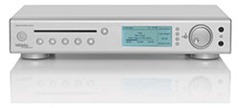 The Hifidelio streamer supports
The Hifidelio streamer supports 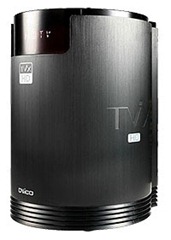 Korean DVICO has come up with a very nice modular package that supports streaming 1080i HD TV as well as audio, including
Korean DVICO has come up with a very nice modular package that supports streaming 1080i HD TV as well as audio, including 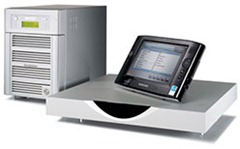 There is no way that you can not have heard the name Linn if you have moved in audiophile circles and whattayouknow? They too have made a media player! I don’t know anyone who has one, nor do I know of anyone in my immediate vicinity who sells them. I can only assume that it sounds wonderful enough to muffle the sound of the bank repossessing the house. It supports
There is no way that you can not have heard the name Linn if you have moved in audiophile circles and whattayouknow? They too have made a media player! I don’t know anyone who has one, nor do I know of anyone in my immediate vicinity who sells them. I can only assume that it sounds wonderful enough to muffle the sound of the bank repossessing the house. It supports 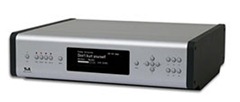
 Supported file formats include
Supported file formats include